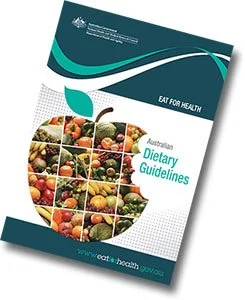
Eat Healthily
Balanced Eating
There are many tools and sources of information to help you on your journey to eating more healthily. One useful example is provided by Government organisation Eat For Health
Eat For Health provides a wide range of information about eating healthily. One of their useful charts is a list of the 5 different food categories we should choose from when planning our meals. The chart also lists the food that we should only consume occasionally such as olive oil, alcohol and processed or take-away food.
The 5 food categories are:
Grain (cereal) foods, mostly wholegrain and/or high cereal fibre varieties
Vegetables and legumes/beans
Fruit
Milk, yoghurt, cheese and/or alternatives, mostly reduced fats
Lean meats and poultry, fish, eggs, tofu, nuts and seeds and legumes/beans
Emotional Eating
One more tip on eating healthily, is to try and avoid emotional eating. This is when you snack or eat ‘comfort’ food multiple times a day, rather than only eating at set mealtimes or when you are hungry.
Avoiding emotional eating is tough to do when you are struggling with mental health challenges. Racing to the pantry and turning to food especially ‘junk’ food, is an easy way to distract yourself from dark thoughts. It is also an easy way to give you a quick pleasure-hit.
Unfortunately, eating this way can quickly lead to weight gain. This, in turn, may also cause you to feel guilt or shame.
One idea that may help you to manage your eating, is to keep a food diary. This will help you log the food you eat, when you eat, plus the quantity. Focusing on these points will enable you to better understand your eating habits, which may help you to reduce the temptation of using food as a crux.
You can record the food you eat in a notebook. Alternatively, you can use one of the many food, emotional and binge eating Apps such as The Ate App and Eat Right Now





